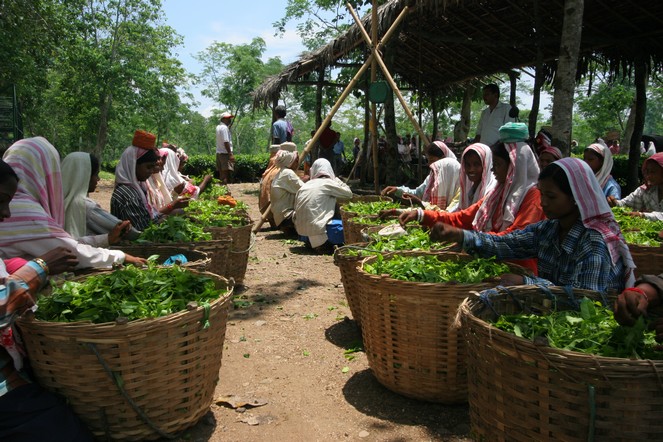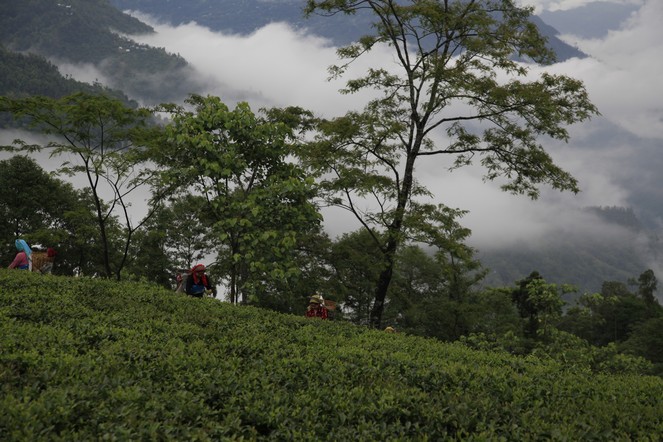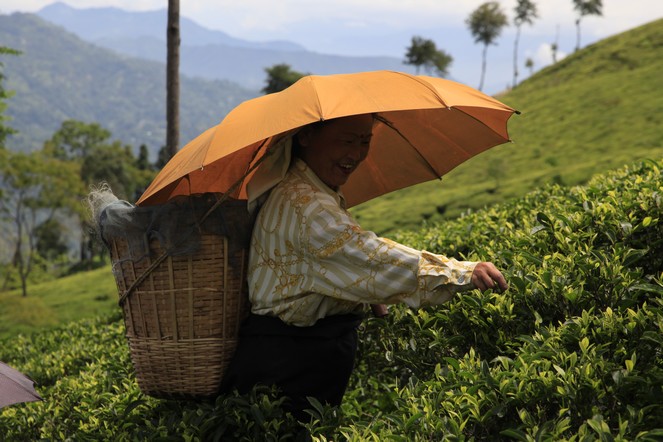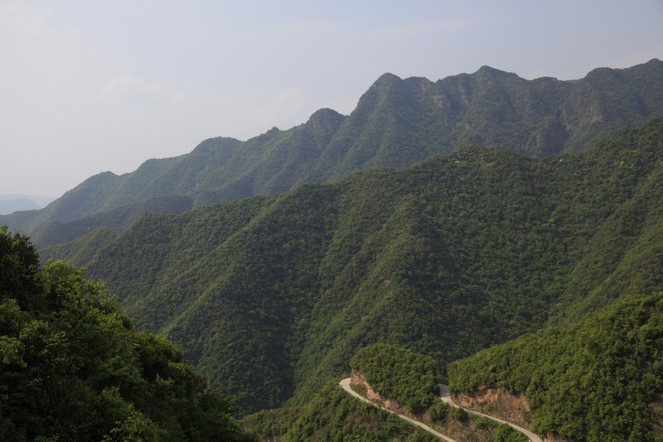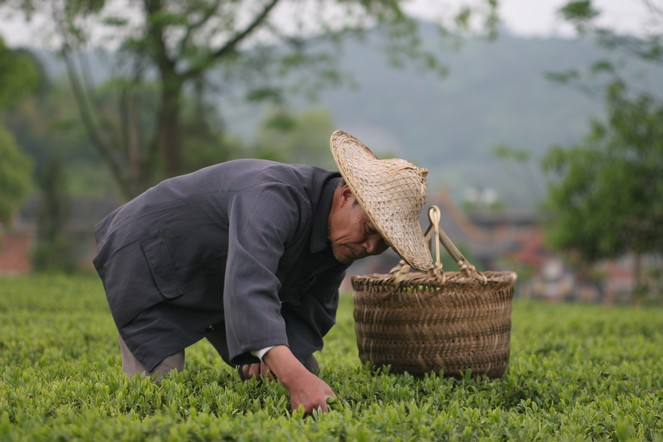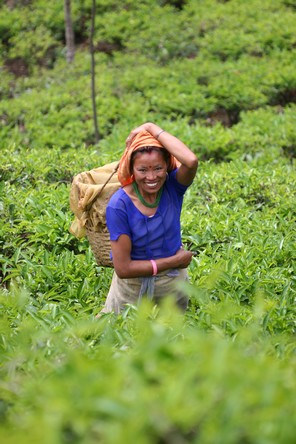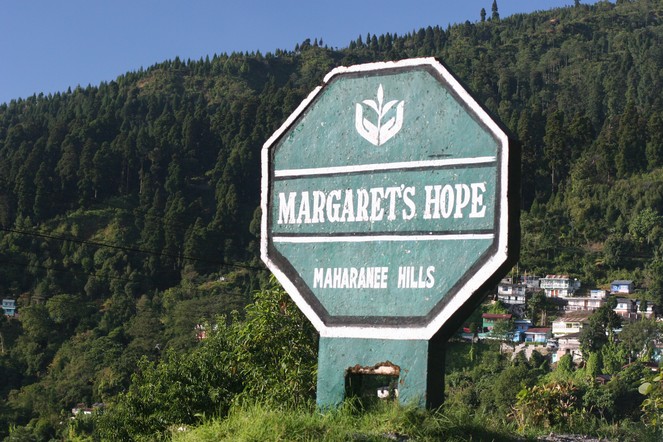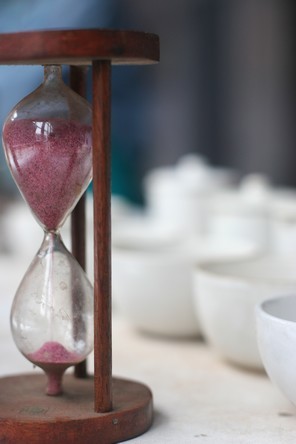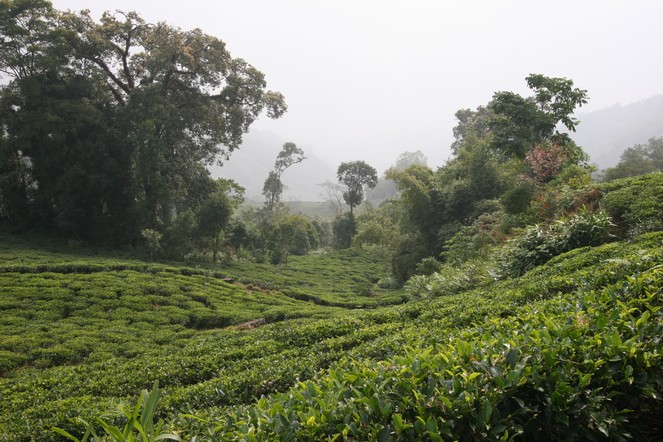It is not just France enjoying a clear blue sky at the moment. Camellia sinensis is happy in weather that sees rain alternating with cloudless skies. However, it also has a fondness for spells of mist.
From plant to cup
Assam teas are worth a detour
Powerful and full-bodied, Assam teas are worth a detour. Yet these teas are still not that well known. If you like Burgundy wines, I recommend them. You will find the same astringency and lovely finish in the mouth, the spicy, woody notes sometimes accompanied by tobacco and honey aromas.
Don’t these cheerful pluckers make you want to learn more about their tea?
Rain in Darjeeling
After several days of fine weather, the rain has returned, incessantly, in Darjeeling. Day and night. Heavy rain – without a break. Sometimes accompanied by strong winds and hail. With rain like this, nobody can produce good tea because the leaves grow too quickly.
Luckily, just as the rains started I bought three incredible batches: Puttabong Clonal Queen DJ232, Puttabong Kakra Muscatel DJ223 and North Tukvar Delmas Bari DJ101.
Start of the “second flush” harvest in Darjeeling
Visiting fine tea plantations in China
Among the best-known green teas in China are names such as Huang Hua Yun Jian and Yongxi Huo Qing. A couple of weeks ago I decided I wanted to visit the villages that produce these two rare, delicate teas. I have a weak spot for the first one in particular.
It is difficult to imagine the number of hours it took me to get there, over mountains and passes, before finishing the journey on foot along a path of stone and mud. It just proves that the finest teas are worth it.
Spring teas
Teas plucked in the spring are considered to be the best in many production regions. China is no exception, when it comes to green teas at least. In this country, teas from prestigious places (Long Jing, Bi Luo Chun, Huang Shan Mao Feng and many others) that are plucked before the Qingming festival at the beginning of April are in such high demand that they become unaffordable.
Selection of 2013 first flush Darjeelings
That’s it! I’ve just finished choosing the first flush Darjeelings. I’ve tasted up to 200 samples a day for just over a month, and have finally narrowed it down to the best. This year, some plantations have achieved a better quality than in previous years. This is notably the case with Hilton, Rohini and Teesta Valley. Other reliable gardens like Puttabong, Margaret’s Hope and Singbulli have surpassed themselves.
I have also thought of those who are not yet familiar with first flush Darjeelings, and have selected a Gielle DJ117, which is more approachable for the palate.
Overall, it is fair to say that the quality of the 2013 harvest is significantly higher than in previous years. It has been a long time since this region last experienced a spring unaffected by either excessive cold or severe drought.
A magnificent tea from Margaret’s Hope
Margaret’s Hope has one of the best reputations among Darjeeling gardens. It has built this recognition mainly on its second flush teas, those harvested from mid May to mid June. However, it does also produce some very good first flush teas. Indeed, I have just bought a truly unique batch from Margaret’s Hope, made up almost entirely of buds. It looks like a white tea. It is exceptionally subtle. In the cup, it develops smooth, sweet, elegant qualities that are totally unique.
It is without doubt the very best batch of its kind produced by this garden in recent years. Tea drinkers with an educated palate and who appreciate the rarest fine teas will love it.
The best way to make a cup of first flush Darjeeling
For those of you who are getting your first taste of a first flush Darjeeling, I’d like to remind you that these are rare and fragile teas that need to be prepared with care. The infusion time, for example, should not exceed three minutes and 45 seconds. A fine tea is all about harmony. We look for a balance between the textures, flavours and aromas. With first flush Darjeelings, the best way to find this harmony is to keep the infusion time to between 3’30 and 3’45.
The first flush Darjeelings have started to arrive
The Darjeeling Hillton DJ1 “SFTGFOP1 clonal” that I chose ten days ago has arrived at Roissy airport. It’s one of the very first Darjeelings harvested this year, and this batch of just 95 kilos is worth trying. In the cup, it develops subtle floral notes amidst vegetal aromas of cut grass, raw vegetables and stems. A bouquet of fresh almond, vanilla and yellow fruit accompanies a delightful finish in the mouth, with vegetal, camphor, fresh and vanilla notes.


